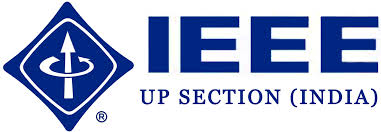Author Guidelines
- General Requirements
Authors submitting papers to IEEE conferences must adhere to the following guidelines to ensure their submissions meet publication standards:
- Authors must have a valid login account on Microsoft CMT (Conference Management Toolkit).
- Papers must be original and unpublished. They should not have been submitted elsewhere for consideration.
- Papers must be written in English and prepared according to the IEEE conference template.
- Authors must comply with IEEE policies on authorship, plagiarism, and intellectual property.
- Paper Format
- Template: Use the official IEEE conference paper template (only in Microsoft Word and LaTeX formats).
- Download the templates from: IEEE Templates Page.
- Paper Length:
- Typical length: 4–6 pages.
- Maximum length: 8 pages (with an additional fee for extra pages if applicable).
- Formatting Details:
- Page size: A4 (210mm x 297mm) or US Letter (8.5 x 11 inches).
- Margins: Top: 19mm, Bottom: 25mm, Left/Right: 17mm.
- Font: Times New Roman, 10-point size for the main text.
- Columns: Double-column format, single-spaced, justified alignment.
- Figures and Tables: Centred and clearly labelled. Ensure text in figures is legible.
- Manuscript Structure
A standard IEEE conference paper should include the following sections:
- Title: Concise and informative, no more than 15 words.
- Author Information: Full names, affiliations, and contact information of all authors. Use footnotes for additional information (e.g., corresponding author).
Kindly note that if your paper will be accepted for publication, no additional author name can be added in the final version of the paper (camera ready Paper).
- Abstract:
- 150–250 words summarizing the objective, methods, results, and conclusions.
- No citations or abbreviations in the abstract.
- Keywords: List 3–5 keywords that best describe the paper’s content.
- Introduction:
- Provide background, research objectives, and a summary of related work.
- Methodology: Describe the research methods, algorithms, or experimental setup in detail.
- Results and Discussion:
- Present findings with supporting figures, tables, or graphs.
- Interpret results in the context of existing literature.
- Conclusion: Summarize key contributions and suggest future research directions.
- Acknowledgments (if any): Recognize funding sources, collaborators, or institutions.
- References: Use IEEE citation style.
- Figures and Tables
- Quality: High-resolution images (at least 300 DPI).
- Color: Use grayscale unless color is essential for clarity.
- Numbering: Number figures and tables consecutively.
- Example: “Figure 1: LiDAR Intensity Data” or “Table 1: Algorithm Parameters”.
- Captions: Place captions below figures and above tables.
- References
- Use the IEEE citation style. Citations should be numbered and appear in square brackets, e.g., [1], [2].
- Reference List:
- List all references in the order of citation.
- Use the following format for common types:
- Journal Article:
[1] A. Author, “Title of paper,” Journal Name, vol. x, no. y, pp. xx–yy, Year. - Conference Paper:
[2] B. Author, “Title of paper,” in Proceedings of Conference Name, Location, Year, pp. xx–yy. - Book:
[3] C. Author, Book Title, Edition, Publisher, Year.
- Submission Process
- Submission Platform: Papers must be submitted via the designated conference submission system - Microsoft CMT.
- File Format: Submit original copy of the paper in word format or latex. Don’t convert pdf format into word format.
- Copyright Form: Authors must complete and upload the IEEE Copyright Form after paper acceptance.
- Ethical Standards
- Avoid plagiarism by appropriately citing all sources. The conference will use plagiarism detection software.
- Acknowledge all contributors and funding sources.
- Clearly disclose any potential conflicts of interest.
- Review Process
- Submissions will undergo a peer review process.
- Reviewers will evaluate submissions based on contribution to the field, originality of the research paper, flow of the research paper, paper length, language, reviewers confidence and reviewers comments.
- Post-Acceptance Requirements
- Camera-Ready Submission: Incorporate all reviewer feedback and submit the final version.
- Presentation: At least one author must register and present the paper during the conference.
- Publication: Accepted papers will be published in the IEEE Xplore Digital Library.
- Important Resources
- IEEE Author Center: https://authors.ieee.org/
- Plagiarism Guidelines: IEEE Plagiarism Policy
For further queries, please contact the conference organizers at icrito@amity.edu.
